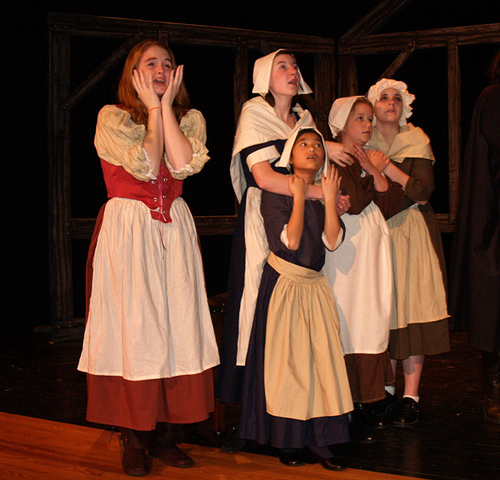You are here
Teaching Kairos through Allegorical Performances
Primary tabs

This lesson teaches the concept of rhetorical kairos by placing allegorical performances in their historical context.
Projector
Computer with the capacity to stream video
This in-class exercise uses Arthur Miller's The Crucible and an episode of the television show Battlestar Galactica to teach rhetorical kairos. It will help if the students have done reading on kairos ahead of time. I used chapter 2 of Ancient Rhetorics for Contemporary Students. Class began with a brief lecture introducing the concept of kairos, using examples such as Sandy Hook and 9/11 to demonstrate how events can open up an opportunity to make an argument on a specific issue. Next, I described the situation at the time of The Crucible's production, explaining the phenomenon of McCarthyism, which turned out to be review for many of the students. On the projector, I showed the students this video of the courtroom scene in the play. The class discussed the parallels between the McCarthyist approach to communism and the Salem Witch Trials as portrayed in the play. I explained how performances can use allegory to make comments on current events. I told the class that I would now play them a video and have them tell me what conversation the performance was contributing to. I played them the beginning and the ending of the Battlestar Galactica episode "Collaborators," which combines various issues from the Iraq War, including government authorization for torture, punishment without trial, and the killing of civilians by the miltary. I told the students only that the episode aired in 2006. They were able to make the connection between the episode and Guantanamo Bay. I had to explain what the other elements of the Iraq War the episode portrayed by allegory. The discussion afterwards covered how both performances made use of allegory to make an argument about current events. The students will shortly be doing rhetorical analyses of the performances they are writing about this semester, so the goal was to get them to see how kairos operates in performances specifically as well as to understand kairos in general.
Prepare a brief lecture introducing the concept of kairos. Watch the videos. Make notes on the elements of allegory you want to make sure the students pick up on.
Watch the performance and take notes on any allegorical elements you see in them.
This assignment was not evaluated. The students will be evaluated on the rhetorical analyses of the performances they saw, papers that will follow this assignment in the chronology of the class.
Based on the discussion, the students did understand that the performances were using allegory to make a comment on current events and that they were taking advantage of a pre-existing conversation about the issues at hand. If I did this again, I would follow up in the next class with an example of a well-timed argument made in writing based on current events, so the students could see how kairos is used outside of allegory or performance.
The Rhetoric of Performance is a writing-intensive course that teaches students to analyze rhetoric by examining the rhetoric within and surrounding performances. Students see a performance early in the semester. They write a paper summarizing its rhetorical situation and the arguments made within and around it. They also write a detailed rhetorical analysis of the performance. Finally, they write their own long review assessing its rhetorical and performative elements. Students also learn to write in the genres surrounding performances, such as the program note, the advertisement, and the review.
-

- Log in to post comments

